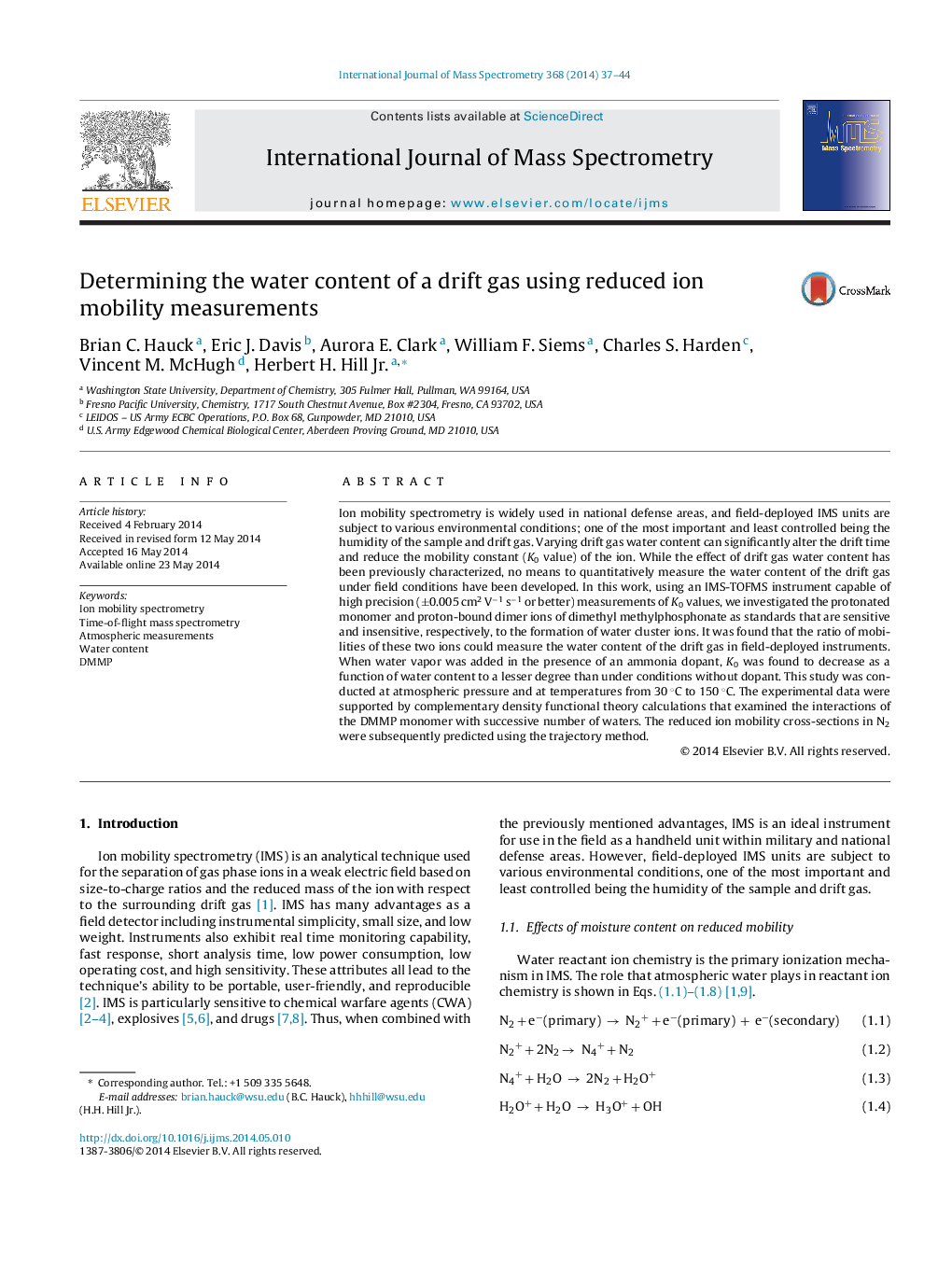| کد مقاله | کد نشریه | سال انتشار | مقاله انگلیسی | نسخه تمام متن |
|---|---|---|---|---|
| 1193754 | 1492260 | 2014 | 8 صفحه PDF | دانلود رایگان |
• The ratio of reduced ion mobilities is measured as a function of water content. It is suggested that it be used to determine gas-phase water content.
• High precision ion mobility measurements.
• Prediction of the clustering process of successive neutral waters around DMMP protonated monomer ion is supported by density functional theory calculations.
• Prediction of the ion mobility cross-sections in N2 using the trajectory method.
Ion mobility spectrometry is widely used in national defense areas, and field-deployed IMS units are subject to various environmental conditions; one of the most important and least controlled being the humidity of the sample and drift gas. Varying drift gas water content can significantly alter the drift time and reduce the mobility constant (K0 value) of the ion. While the effect of drift gas water content has been previously characterized, no means to quantitatively measure the water content of the drift gas under field conditions have been developed. In this work, using an IMS-TOFMS instrument capable of high precision (±0.005 cm2 V−1 s−1 or better) measurements of K0 values, we investigated the protonated monomer and proton-bound dimer ions of dimethyl methylphosphonate as standards that are sensitive and insensitive, respectively, to the formation of water cluster ions. It was found that the ratio of mobilities of these two ions could measure the water content of the drift gas in field-deployed instruments. When water vapor was added in the presence of an ammonia dopant, K0 was found to decrease as a function of water content to a lesser degree than under conditions without dopant. This study was conducted at atmospheric pressure and at temperatures from 30 °C to 150 °C. The experimental data were supported by complementary density functional theory calculations that examined the interactions of the DMMP monomer with successive number of waters. The reduced ion mobility cross-sections in N2 were subsequently predicted using the trajectory method.
Figure optionsDownload high-quality image (95 K)Download as PowerPoint slide
Journal: International Journal of Mass Spectrometry - Volume 368, 15 July 2014, Pages 37–44
